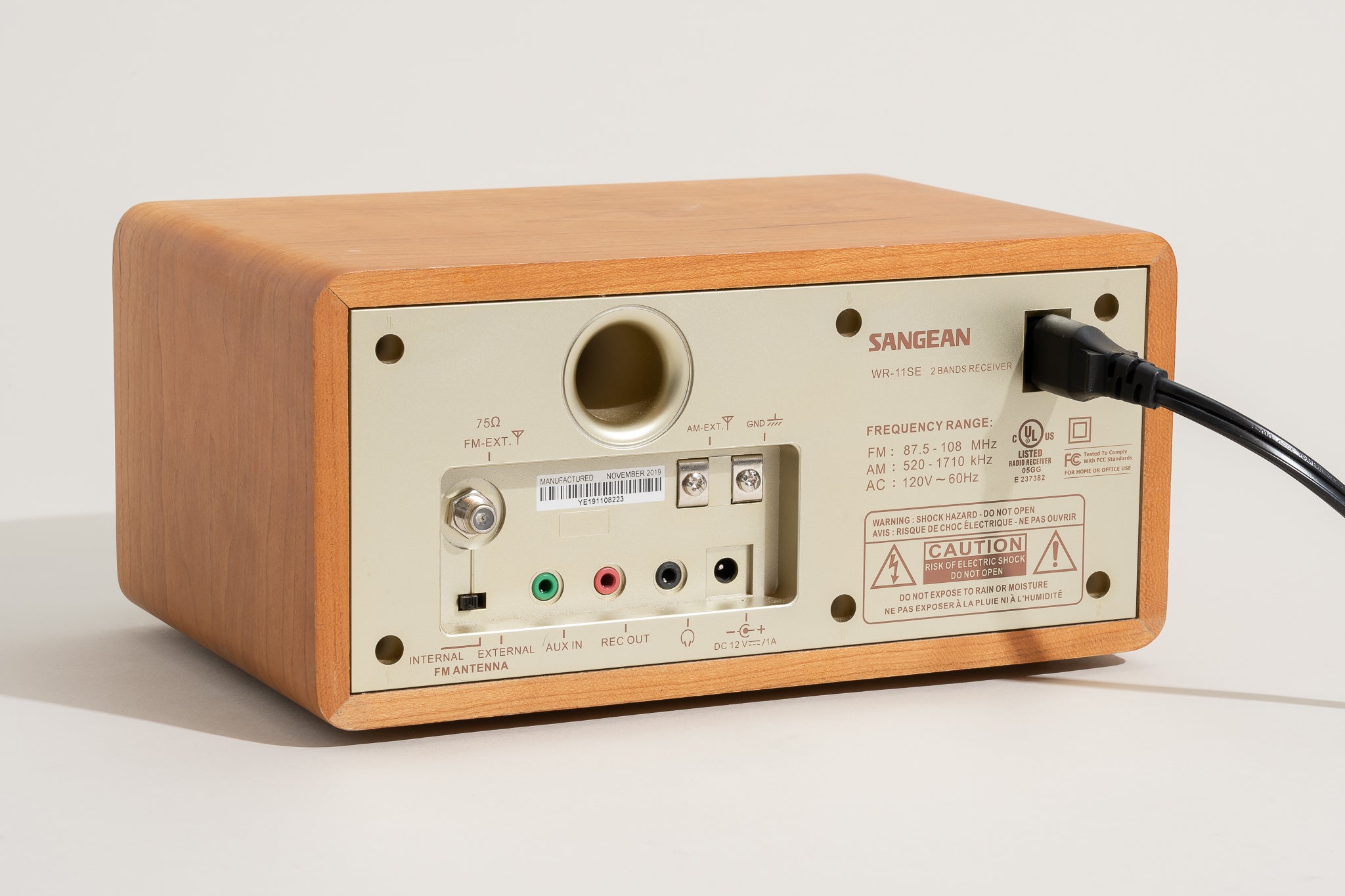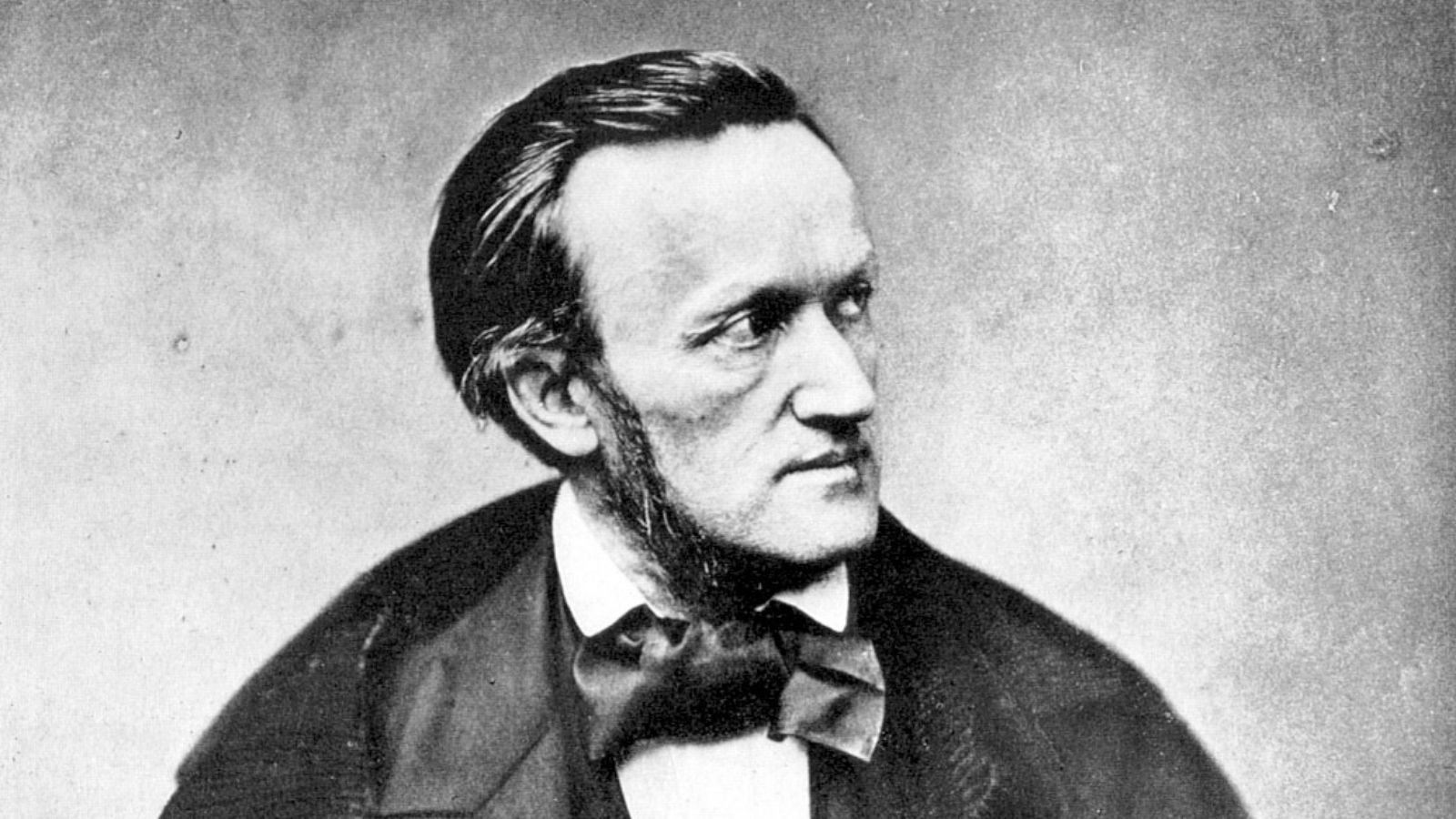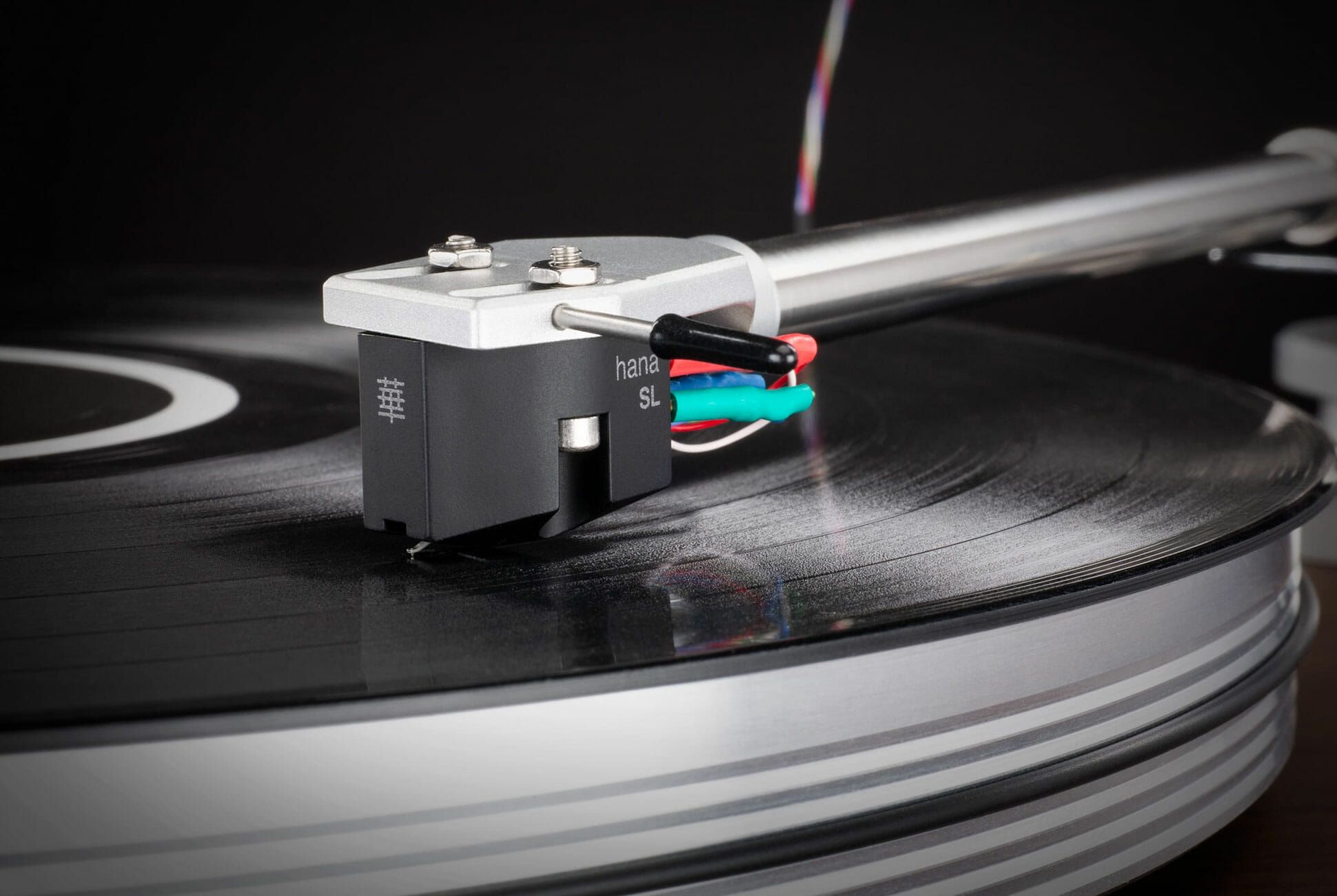Home>Devices & Equipment>Radio>Why Is AM Radio So Bad


Radio
Why Is AM Radio So Bad
Modified: January 22, 2024
Discover the reasons why AM radio often falls short in terms of sound quality and signal strength. Explore the challenges and limitations faced by this medium.
(Many of the links in this article redirect to a specific reviewed product. Your purchase of these products through affiliate links helps to generate commission for AudioLover.com, at no extra cost. Learn more)
Table of Contents
Introduction
In today’s digital age, where music streaming services and podcasts dominate the airwaves, it’s easy to overlook the significance and impact of good old-fashioned AM radio. AM, which stands for Amplitude Modulation, has a rich history and played a vital role in shaping the world of broadcasting. However, despite its historical significance, many people consider AM radio to be of inferior quality compared to FM radio.
So, what exactly makes AM radio “bad” in the eyes of many listeners? To truly understand the reasons behind this perception, we need to delve into the history, technology, and limitations of AM radio. By exploring these factors, we can gain a deeper appreciation for the challenges faced by AM radio and its place in the ever-evolving world of media.
From the early days of radio broadcasting, AM technology allowed stations to transmit signals over long distances, making it the go-to choice for both entertainment and information dissemination. In fact, AM radio played a pivotal role in connecting people during significant events like world wars and major news stories.
However, as technology advanced and FM (Frequency Modulation) radio emerged, AM radio started to face significant challenges. The introduction of FM radio brought with it higher fidelity, superior sound quality, and the ability to transmit in stereo. These advantages made FM radio more appealing to listeners, leading to a decline in AM radio’s popularity.
Despite the popularity of FM radio, AM radio has managed to survive to this day. Many rural areas and remote locations still rely on AM radio for their daily dose of news, weather updates, and local programming. AM radio also holds a special place in the hearts of nostalgia seekers and enthusiasts who appreciate the warm and distinct sound that AM signals can produce.
Throughout this article, we will explore the technology and limitations of AM radio, the challenges it faces in the modern era, and the future prospects for this enduring medium. So, let’s tune in and discover why AM radio is often perceived as “bad,” even though it still plays a vital role in the broadcasting landscape.
History of AM Radio
Before we dive into the world of AM radio, it’s essential to understand its historical roots. AM radio has a fascinating history that dates back to the late 19th century, with significant contributions from inventors and scientists who paved the way for modern communication.
The foundations of radio technology were laid by Nikola Tesla and Guglielmo Marconi, who both made groundbreaking discoveries in the late 1800s. Tesla’s work on wireless power transfer and Marconi’s successful transmission of wireless signals laid the groundwork for radio broadcasting.
However, it was Edwin Howard Armstrong, an American electrical engineer, who revolutionized AM radio in the 1910s and 1920s. Armstrong invented and patented many key components of AM radio, including the regenerative circuit, superheterodyne receiver, and most notably, frequency modulation (FM).
During the early years of radio, AM was the primary broadcasting technology. In the 1920s and 1930s, radio stations started to pop up across the United States and around the world. These stations played a variety of programming, including news, music, and entertainment, captivating audiences and driving the growth of the radio industry.
AM radio reached its peak of popularity in the 1940s and 1950s, known as the Golden Age of Radio. Families would gather around their radios to listen to their favorite programs, including comedy shows, dramas, and live performances. It was through AM radio that iconic shows like “The War of the Worlds” and “The Lone Ranger” came to life, captivating millions of listeners across the country.
Furthermore, AM radio played a crucial role during World War II, serving as a vital communication tool for military forces around the world. It provided news updates, music, and entertainment for troops deployed overseas, offering a sense of connection and comfort during challenging times.
Despite its dominance, AM radio began to face competition from FM radio in the late 1950s. FM radio boasted superior sound quality and the ability to transmit in stereo, attracting listeners who sought a more immersive radio experience. This marked the beginning of a gradual decline for AM radio, as more stations started to adopt FM technology.
Nevertheless, the history of AM radio stands as a testament to the ingenuity and perseverance of individuals who sought to bring the world closer through wireless communication. Today, while AM radio may not be as prominent as it once was, its historical legacy continues to shape the landscape of broadcasting.
AM Radio Technology
AM radio operates using a modulation technique known as Amplitude Modulation, hence the name “AM.” Modulation is the process of superimposing an audio signal onto a carrier wave to transmit information. In AM radio, the amplitude of the carrier wave is modulated to represent the audio signal.
The technology behind AM radio involves a transmitter, a receiver, and the electromagnetic spectrum. The transmitter takes the audio signal and amplifies it before combining it with the carrier wave. This process results in variations in the amplitude of the carrier wave, corresponding to the audio signal being transmitted.
The receiver, on the other hand, is responsible for capturing and decoding the transmitted signal. It uses an antenna to pick up the electromagnetic waves carrying the AM signal and amplifies it. The receiver then separates the audio signal from the carrier wave, allowing it to be heard through a speaker or headphones.
The frequency range used for AM radio transmission is between 535 and 1705 kilohertz (kHz). This range allows for long-distance transmission, as lower frequencies can travel further due to their ability to diffract around obstacles. However, lower frequencies also result in reduced sound quality and susceptibility to interference and noise.
AM radio technology has its advantages and disadvantages. One advantage is its ability to cover larger geographic areas, making it suitable for broadcasting news, sports, and emergency information across regions. Additionally, AM radio signals can bounce off the Earth’s ionosphere, enabling long-distance reception under certain atmospheric conditions.
However, the limitations of AM radio technology impact its overall sound quality. AM signals are susceptible to interference and noise, resulting in static, atmospheric disturbances, and other forms of interference that can degrade the listening experience. AM radio signals are also prone to signal fading, which occurs when the radio waves reflect and interfere with each other, causing variations in signal strength.
Despite these limitations, AM radio technology continues to serve a crucial role in specific applications. It remains widely used for broadcasting talk radio, news, religious programs, and sports coverage. Additionally, AM radio’s long-distance capabilities make it valuable in rural and remote areas where FM radio signal may not reach.
As technology continues to advance, there are efforts to improve the sound quality of AM radio. Digital modes of transmission, such as Digital Radio Mondiale (DRM), promise better audio fidelity and resistance to interference. These advancements may help revitalize the appeal of AM radio in the future.
Limitations of AM Radio
While AM radio has had a significant impact on broadcasting history, it also comes with its fair share of limitations that contribute to its perceived inferiority compared to other radio technologies. These limitations have played a role in the decline of AM radio’s popularity:
- Poor Sound Quality: One of the main complaints about AM radio is its relatively poor sound quality compared to FM radio. AM signals are more susceptible to interference and noise, resulting in background static, distortion, and reduced clarity of audio. This limitation can make listening to music on AM radio less enjoyable for those seeking high-fidelity sound.
- Signal Interference: AM radio signals are susceptible to various forms of interference that can degrade the listening experience. Atmospheric disturbances, electrical devices, and even natural phenomena like lightning can affect the reception of AM signals, leading to intermittent static or distorted audio. This interference can make it challenging to tune in to AM stations clearly, particularly in urban areas with high levels of electromagnetic interference.
- Less Bandwidth: AM radio has a narrower frequency range compared to FM radio. This limited bandwidth results in a lower audio quality and the inability to transmit in stereo. FM radio, with its wider bandwidth, can provide a more immersive listening experience with higher fidelity audio and the ability to separate left and right channels for stereo sound.
- Signal Fading: AM radio signals are susceptible to signal fading, especially during certain atmospheric conditions. When the radio waves bounce off the Earth’s ionosphere, they can interfere with each other and result in momentary drops in signal strength. This fading can cause fluctuations in volume and make listening to AM radio less consistent compared to the more stable reception of FM radio.
- Limited Programming Options: As the popularity of AM radio has declined, many stations have shifted to the FM band, resulting in a more limited range of programming options on AM. While AM radio still offers talk shows, news, and sports coverage, the variety of music genres and specialized programming is often more abundant on FM and digital platforms.
Despite these limitations, AM radio continues to have a loyal listener base, particularly in rural and remote areas where AM signals can reach further distances. The nostalgic charm and unique sound of AM radio also attract enthusiasts who appreciate its historical significance and distinct character.
Efforts are being made to address some of these limitations and improve the overall listening experience of AM radio. Advancements in technology, such as digital modes of transmission and improved receiver designs, aim to reduce noise and interference and enhance the sound quality of AM broadcasts.
While AM radio may not be as popular as it once was, it remains a valuable medium for information dissemination and community engagement, preserving a piece of broadcasting history that continues to resonate with listeners around the world.
Interference and Noise in AM Radio
One of the significant challenges faced by AM radio is the issue of interference and noise that can deteriorate the quality of the transmitted signal. AM signals, being susceptible to various forms of interference, can result in a less than optimal listening experience for listeners. Let’s explore some common sources of interference and noise in AM radio:
- Atmospheric Disturbances: AM radio signals are affected by atmospheric conditions, particularly during thunderstorms or solar activities. Lightning discharges and static charges in the atmosphere can cause severe interference, resulting in crackling sounds and disruptions in the reception of AM signals. These disturbances are more prevalent in areas with open fields and negligible electromagnetic shielding.
- Electrical Devices: Household and industrial electrical devices can generate electromagnetic fields that interfere with AM radio signals. Common culprits include fluorescent lights, motors, power lines, and electrical appliances. When these devices are in close proximity to an AM radio receiver or the transmission path, they can introduce buzzing, humming, and static noises into the audio signal.
- Man-made Radio Frequency Interference (RFI): With the proliferation of electronic devices, the electromagnetic spectrum has become increasingly crowded. The presence of other radio frequencies, such as Wi-Fi signals, cellular networks, and even other AM radio stations operating in close proximity, can create RFI that interferes with the desired AM signal. This interference results in distortion and degradation of the audio quality.
- Natural Radio Noise: Apart from interference caused by man-made sources, there are natural phenomena that contribute to noise in AM radio signals. Cosmic radiation, galactic noise, and even static produced by celestial bodies like the Sun can introduce a level of background noise into the AM signal. While these influences may be relatively low in comparison, they still contribute to the overall noise floor of the transmission.
- Physical Obstructions: The presence of physical obstructions, such as buildings, hills, and mountains, can cause signal blockage or reflection, leading to multipath propagation. Multipath propagation occurs when multiple reflected signals arrive at the receiver at slightly different times due to bounce-offs, causing interference and distortion. This interference can manifest as ghosting or fading in the transmitted audio.
Dealing with interference and noise in AM radio requires a combination of technical solutions and careful positioning of equipment. Antenna design and placement, shielding of receivers, and the use of filters and noise reduction technologies can help mitigate interference. Additionally, AM radio stations often work on improving their signal quality and increasing transmitter power to combat the effects of interference.
Despite these challenges, AM radio has managed to maintain its relevance, particularly in areas where FM coverage is limited, or where listeners prefer the unique character and nostalgia associated with AM broadcasts. Advances in technology and ongoing research aim to address these interference issues and enhance the overall AM radio listening experience for audiences in the future.
Decline of AM Radio
Over the past few decades, AM radio has experienced a decline in popularity, giving way to other forms of audio entertainment and information dissemination. Several factors have contributed to this decline, shaping the landscape of radio broadcasting. Let’s explore some of the key reasons behind the waning popularity of AM radio:
- Rise of FM Radio: FM radio emerged as a formidable competitor to AM radio in the 1950s. FM offered several advantages, including higher sound quality, stereo transmission, and resistance to noise and interference. These advantages attracted listeners who sought a more immersive and enjoyable radio experience. As FM radio gained traction, many AM radio stations transitioned to FM, resulting in a reduced number of AM stations and programming options.
- Changing Listener Preferences: With the advent of new technologies and a shift in consumer behavior, listener preferences have evolved. Today, people have access to a wide range of audio content, including music streaming services, podcasts, and digital platforms. These options provide personalized and on-demand content, which may be more appealing to listeners compared to traditional radio broadcasts. The convenience and customization offered by digital platforms have drawn audiences away from AM radio.
- Competition with Television and Internet: The rise of television and the internet has significantly impacted the popularity of AM radio. Television introduced visual storytelling, which captivated audiences and offered a more immersive experience. Similarly, the internet opened up a world of endless possibilities for information and entertainment consumption. With the internet’s abundance of streaming services, podcasts, and digital radio stations, listeners have a plethora of choices beyond traditional AM radio broadcasts.
- Limited Sound Quality: As mentioned earlier, the sound quality of AM radio is often perceived as inferior to FM and other digital audio formats. The susceptibility of AM signals to interference and noise results in lower fidelity and reduced clarity of audio. This limitation may deter listeners who seek high-quality sound experiences, pushing them towards alternative platforms that offer better audio quality.
- Demographic Shifts: As generations change, so do their preferences in media consumption. Younger demographics, in particular, tend to gravitate towards digital platforms and on-demand content. The nostalgia and historical significance that may attract older listeners to AM radio do not always resonate with younger audiences who were brought up in the digital age. This demographic shift has played a role in the declining listenership of AM radio.
Despite the decline, it is important to note that AM radio still holds a significant place in broadcasting. It continues to serve as a reliable source of news, emergency information, and local programming, particularly in rural areas where FM coverage is limited. AM radio’s unique character and warm sound continue to attract a dedicated listener base, composed of nostalgia seekers and enthusiasts who appreciate its historical importance.
With ongoing advancements in technology and the potential for revitalization efforts, there may still be opportunities to rekindle interest in AM radio. Digital modes of transmission, improved receiver technology, and innovative programming strategies can help breathe new life into AM radio and attract a broader audience. While the decline of AM radio is undeniable, its significance in broadcasting history and its enduring presence today should not be overlooked.
AM Radio vs FM Radio
The comparison between AM radio and FM radio is an essential aspect of understanding the differences and preferences in the world of broadcasting. While both technologies serve the purpose of delivering audio content to listeners, there are distinct characteristics that set them apart. Let’s explore the differences between AM radio and FM radio:
- Sound Quality: One of the significant factors that differentiate AM radio from FM radio is its sound quality. FM radio offers higher fidelity and clarity compared to AM radio. FM signals are less susceptible to interference and noise, resulting in a cleaner and more immersive listening experience. On the other hand, AM radio may suffer from static, atmospheric disturbances, and other forms of interference that can degrade the sound quality, especially in urban areas.
- Frequency Range: The frequency ranges used for AM radio and FM radio differ. AM radio operates within the frequency range of 535 to 1705 kilohertz (kHz), while FM radio operates within the higher frequency range of 88 to 108 megahertz (MHz). This difference in frequency gives FM radio the advantage of higher bandwidth, allowing for a wider range of audio frequencies and better reproduction of music and other high-quality audio content.
- Signal Strength and Range: AM radio generally provides better long-distance signal propagation compared to FM radio. This is because lower frequency signals, such as those used in AM radio, can diffract around obstacles and travel further distances. As a result, AM radio can be received more reliably in rural and remote areas. However, this advantage comes with the trade-off of lower sound quality and susceptibility to interference compared to FM radio, which has a shorter range but offers superior sound reproduction.
- Programming: Historically, AM radio has been a popular medium for news, talk shows, and sports broadcasting, while FM radio has been more associated with music programming. Although this distinction has become less pronounced over the years, especially with the rise of digital platforms, AM radio stations still tend to lean towards talk-oriented programming, while FM radio stations offer a wider variety of music genres and specialized shows.
- Receiver Capabilities: The capabilities of AM and FM radio receivers differ. AM receivers are simpler and less expensive compared to FM receivers. This simplicity allows for wider availability of AM radios in various devices, from portable radios to automobile radios. FM receivers, on the other hand, are more complex and typically require additional circuitry to decode stereo sound and other advanced features.
Ultimately, the choice between AM radio and FM radio depends on personal preferences, listening habits, and location. AM radio has historical significance, remains a reliable source of information, and is popular in rural areas with limited FM coverage. It offers a nostalgic charm and unique character that appeals to certain audiences. FM radio, with its superior sound quality and diverse music programming, tends to cater to listeners seeking an immersive audio experience and a broader range of options.
As technology continues to advance, digital radio platforms and streaming services have also emerged as alternatives to traditional AM and FM radio. These platforms offer greater customization, on-demand content, and convenience, further reshaping the way people consume audio content. However, both AM and FM radio continue to play a vital role in broadcasting, with loyal listener bases and dedicated programming that cater to specific needs and preferences.
Future of AM Radio
The future of AM radio is an intriguing topic, considering the challenges it faces and the rapidly evolving landscape of media consumption. While AM radio has experienced a decline in popularity, there are still opportunities and potential strategies that can help ensure its relevance and longevity in the broadcasting industry:
- Improved Sound Quality: Efforts are being made to enhance the sound quality of AM radio through advancements in technology. Digital modes of transmission, such as Digital Radio Mondiale (DRM), promise better audio fidelity, reduced noise, and resistance to interference. These technologies aim to bridge the sound quality gap between AM and FM radio, offering listeners a more enjoyable experience.
- Revitalized Programming: An essential aspect of revitalizing AM radio lies in creating compelling and diverse programming. While talk shows and news have traditionally been associated with AM radio, incorporating new forms of content and expanding programming options can attract a broader listener base. Collaborations with podcasts, local community organizations, and niche-interest shows can help make AM radio more appealing to audiences seeking unique and specialized content.
- Integration with Digital Platforms: Integrating AM radio with digital platforms and streaming services allows for greater accessibility and convenience. Through internet streaming, listeners can tune in to their favorite AM radio stations from anywhere in the world, expanding the reach of AM broadcasts. Additionally, leveraging digital platforms for on-demand content and customized programming can attract younger listeners who prefer personalized audio experiences.
- Local and Community Focus: AM radio has the advantage of offering localized programming and community-based content. By emphasizing this aspect and focusing on serving the needs of local communities, AM stations can differentiate themselves from other forms of media. This can include hyperlocal news coverage, community events, and connections with local businesses, creating a sense of belonging and relevance for listeners.
- Collaboration and Partnerships: Collaboration among AM radio stations, industry stakeholders, and technology providers can drive innovation and provide a shared platform for addressing common challenges. Partnerships with other media outlets, such as newspapers or digital platforms, can also create synergistic opportunities for cross-promotion and content sharing, helping to expand the reach and impact of AM radio.
It is important to remember that while the future of AM radio may involve adaptation and embracing new technologies, its historical significance and unique character should not be forgotten. AM radio holds a special place in the hearts of nostalgia seekers and enthusiasts who appreciate its warmth and distinct sound. It continues to serve as an important medium for emergency communication, providing critical information during times of crisis.
The future of AM radio lies in finding the right balance between preserving its heritage and embracing innovation. By capitalizing on its strengths, overcoming technical limitations, and adapting to changing listener preferences, AM radio can remain a relevant and vibrant part of the broadcasting industry for years to come.
Conclusion
The journey of AM radio has been a fascinating one, filled with historical milestones, technological advancements, and challenges. While it may be perceived as having limitations compared to FM radio and facing competition from digital platforms, AM radio continues to hold a significant place in the broadcasting landscape.
We explored the rich history of AM radio, from its early days as a revolutionary communication technology to its golden age of radio programming. We also discussed the technology behind AM radio, its limitations, and the interference and noise that affect its sound quality. Additionally, we examined the decline of AM radio and the factors contributing to its reduced popularity.
However, the story of AM radio doesn’t end there. The future of AM radio holds promise and potential. With ongoing advancements in technology, efforts to improve sound quality, and integration with digital platforms, AM radio can adapt to the changing media landscape and attract a new generation of listeners.
Revitalized programming, collaborations, and an emphasis on local and community-focused content can help make AM radio relevant and meaningful for listeners seeking unique and engaging experiences. Its ability to provide localized news, emergency information, and connection to communities remains invaluable, particularly in rural and remote areas.
As the broadcasting industry continues to evolve, it’s important to recognize the place that AM radio holds in our cultural heritage. Its nostalgia, warmth, and distinctive sound continue to captivate enthusiasts and provide a connection to a bygone era. Preserving the legacy and appeal of AM radio while embracing innovation and new technologies will be key to ensuring its enduring presence in the years to come.
So, the next time you tune in to an AM radio station, take a moment to appreciate the historical significance and unique character it brings to the world of broadcasting. Whether it’s the crackling sound, the familiar voices on talk shows, or the connection it provides during emergencies, AM radio continues to play an important role in shaping the way we consume information and experience audio content.











